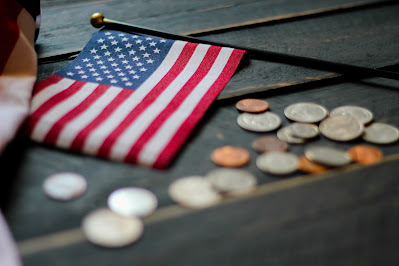Thursday, July 3, 2025
Happy 4th of July!
Monday, June 30, 2025
Buying Junk Silver for Beginners
Friday, June 27, 2025
Silver vs Platinum: Metals Other Than Gold You Can Pawn
People’s love of all things silver has a long history, making it a natural precious metal to exchange for cash (or hold onto, as the case may be). Like gold, it isn’t just beautiful but also has a solid reputation in monetary markets, which is part of its allure for pawners.This under appreciated precious metal is used in so many ways that it might be lurking in your home somewhere without your knowledge. It’s a popular feature of lots of things other than jewelry. It can be found on the toes of boots and in electronics, batteries, car parts, and decorative knick-knacks. It’s also been used to make pretty much every type of utensil found in kitchens and dining rooms everywhere. Silver has a timeless beauty that sells, which is why so many people adorn themselves with it in all of its forms. But just like other precious metals, your metal item’s dollar value could be based on a few different factors:
- Purity. What variety of silver is the item you want to sell? For example, sterling silver is made up of 92.5 percent silver, making it one of the more valuable, in-demand types of silver there is.
- Weight. The amount of silver in an item is also determined by its weight, thus bringing people more dollars for heavier items.
- Market demand. How much the shop believes it can make on a given day is yet another consideration.
- It's uniqueness. A one-of-a-kind necklace might be easier to sell than something more generic.
- Other variables. Social, political and economic factors can all impact consumers’ willingness to buy a given item, impacting how much money you may get for it.
Tuesday, June 24, 2025
What Do You Know About America's First Coins?
Saturday, June 21, 2025
Storing Your Collection
Here are some tips on how to store your coin collection properly...
Keep coins cool and dry; Sharp changes in temperature and moisture cause discoloration that devalues coins. Avoid talking directly over coins; tiny droplets of saliva can also create spots on a coin. Just like fingerprints, these marks are difficult to remove.
Use original holders;
All modern coin sets and coins should be bought and sold in original cases and capsules. The Mint sells coin sets in protective plastic cases called lenses or in folders. Individual coins are packaged in capsules fitted into folders or boxes.
In addition to original holders, other storage options include:
- 2" x 2" cardboard or plastic holders
- Plastic tubes or capsules
- Sleeves or envelopes
- Albums
For high-value coins, use hard plastic holders. Professional coin grading services use sealed holders called slabs to protect authenticated and graded coins. Use acid-free cardboard and plastic holders free from polyvinyl chloride (PVC). Acid and PVC can ruin a coin’s surface. PVC eventually coats a coin with sticky green slime.
Save documentation; Some coins and coin sets come with a certificate of authenticity and/or an information card.
Keep them safe; A safe-deposit box at a bank is ideal. If you have a home collection, ensure that your home insurance covers full replacement costs. Source
Wednesday, June 18, 2025
Getting Started With Coin Collecting
Sunday, June 15, 2025
Happy Fathers Day!
Happy Fathers Day from us at Martinez Coin And Jewelry Exchange to you!
Hope you have a very special day!
(925) 335-9500
martinezcoin@comcast.net




